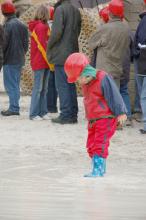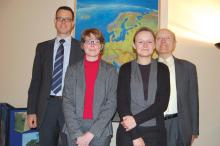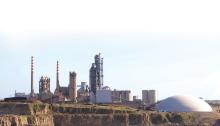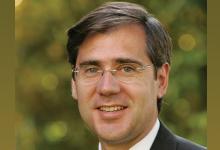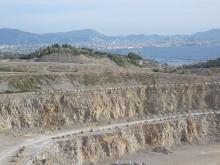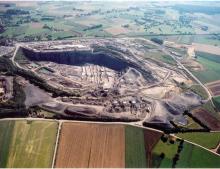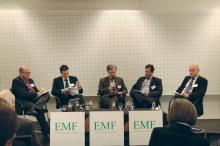
Opening up quarries to local communities under the European Minerals day was the brainchild of the Industrial Minerals Association. Claire Symes talked to IMA president Thierry Salmona in the build up to the next event in 2011
Some of the biggest opponents to new quarries and extensions of existing ones are local residents and their campaigning power can halt access to high quality reserves. But how many of them really understand the need for aggregates and minerals on a regional basis or have seen the benefits quarrying can bring first hand? The bi-annual European Minerals Day was set up by the
"The European Minerals day was launched principally to raise public awareness about the importance of minerals in everyday life and to showcase the good initiatives that the industrial minerals industry is taking in their mines and quarries," explained IMA-Europe president Thierry Salmona.
"When it was launched in 2007 as the initiative of the European industrial minerals sector, it was represented by IMA-Europe in association with the European Lime Association (
The 2009 event also received the support from the
"As expected, the event has professionalised itself, with IMA-Europe and its partners providing support and promotion at European level - and companies organising the actual events on site," said Salmona.
"Compared to the 2007 event, sites have capitalised on their experiences and increased the involvement of schools, while welcoming the new theme of biodiversity. Beside a wider sector participation (aggregates and cement producers joined the initiative as partners), the 2009 event received much for visibility and support at European level, thanks to the organisation of a high level central event in Prague where the 2009 European Minerals Day was officially launched by European Commission Vice-President Günter Verheugen under the Czech EU Presidency." Salmona believes that it is important for all parts of the extractive industry to get involved in the initiative. "Our industry is a complex one and the exclusive properties of our products stem not only from the deposits, but also from the processing that the ore is undergoing in our plants," he said. "We are therefore proud to show the plants. Reaction of the people is generally surprise when confronted by the complexity of the process. In addition, the extractive industries share common objectives, especially with regard to improving the image of the quarrying sector as a whole.
"Raising awareness about the compatibility of mining and biodiversity as well as supporting the Raw Materials Initiative has more impact when acting together."
Association aim
Events such as the European Minerals Day are an essential element of IMA-Europe's remit. The association was founded in December 1993 to provide sector-based representation for industrial minerals and to promote the common interests of its members. IMA-Europe has become the umbrella organisation which to date counts eleven European associations specific to individual minerals and representing the producers of calcium carbonate, ground and precipitated calcium carbonates and dolomite (
Its current membership is drawn from about 500 companies or groups, employing around 42,500 people and producing 170 million tonnes per year of industrial minerals for a value exceeding E13billion in 23 EU Member States, plus Croatia, Norway, Switzerland, Turkey, and Ukraine. In each of its member associations, IMA-Europe counts the main EU producers of industrial minerals.
Salmona, who is also vice president for innovation and business support and chief technical officer for Imerys, took on the role of president on IMA-Europe in September 2008.
"My company had been for long a member of IMA and we always considered we were getting great value from the work done by IMA secretariat and all IMA members in the various working groups and committees," he explained. "We thought we had to contribute ourselves, and as I had been involved with IMA for a long time, I was selected to do so." According to Salmona, the two roles fit well together. "One of my business support functions concerns environment, health and safety and sustainable development which are in the heart of IMA preoccupation. Also, I am in charge of geology and this fits with many subjects IMA is dealing with. Last, but not least, I have been with the executive committee of the company for 10 years, and I believe this gives me the possibility to put in perspective the many aspects of the industry, and the implications of various regulations." Salmona joined Imerys 10 years ago to take charge of the building materials and raw materials for ceramics business. In 2003 he moved to oversee the speciality minerals business before taking on his current role.
He clearly thrives on the challenges the industry presents to him on a daily basis and is passionate about the sector. "It is just fun," he said. "Minerals are everywhere, so when you are in minerals you need to understand how almost everything that is manufactured is made. One central point in our business is to understand in detail the applications and the needs of our customers - and believe me they are numerous!" The recent global economic downturn has presented Salmona and his team with new challenges. "It has been very difficult, all the more as minerals are very early on the value chain," he explained. "When you are five steps upstream from the final user, and when each element in the value chain reduces inventory 10%, you end up with some markets being down 40 %. This happened, for instance, in some markets like refractories in 2009.
"The industry has reacted very strongly by reducing costs severely on the one hand, and reducing inventories and capital expenditures on the other hand.
So it is true that most of the industry was reinforced. However, one should not forget that some companies suffered a lot. Also the industry had to reduce its workforce and this is a weakness if the market picks up.
"The market is definitely picking up again, but the volumes are still significantly lower than in 2008, so we do not know yet how long it will take for the market to return to 2007 and 2008 levels. The rate of return over the next 12 months really depends on the general economic situation. We have a brittle bounce back of the economy and we hope it will hold. A new degradation of the overall European and worldwide economy, would certainly affect the sector."
Despite the impact of the recession on the extractive industries, Salmona is confident that the 2011 European Minerals Day will be a positive one. Quarry and mine operators across Europe are already planning open days and tours for the 12 to 14 May 2011 but Salmona has said that it is not too late to get involved in the initiative.
"We haven't yet finalised the decision on the theme, but there are couple of elements that are certain," he said. "Firstly, there will be even more sites participating, in spite of the crisis - there is a will from the industry to participate and show their best practices to the public.
"The theme of Biodiversity will also be very present, as this is a growing concern for the society and the industry and there will also be many operations showing good rehabilitation and reclamation practices, as well as exemplary projects. One of the companies is, for instance, building an eco town on the site of ancient quarries and many other examples of the kind exist.
"We leave a lot of freedom to our members as to what they can arrange. Often, small sites may organise small-scale events, whereas bigger sites may go for 'open doors' with several site events to which they welcome hundreds of neighbours from the local community.
"So far, companies have been very creative in the type of events they have organised, which ranged from school projects and workshops to large open day events where visitors get introduced to practices related to habitat preservation, such as nursery of plant species, etc. Especially schools projects are exemplary: from planting trees to building insect hotels and taking children on a biodiversity trail through rehabilitated sites." While the European Minerals Day has proved good at changing public perception of the extractive industries, Salmona is also keen to point out the benefits for the workforce of participating companies too. "It is always motivating for a team running an industrial site to welcome the public and show what they are doing," he said. "All the more as we, in our industry, have many good practices to show and people are proud to demonstrate."

